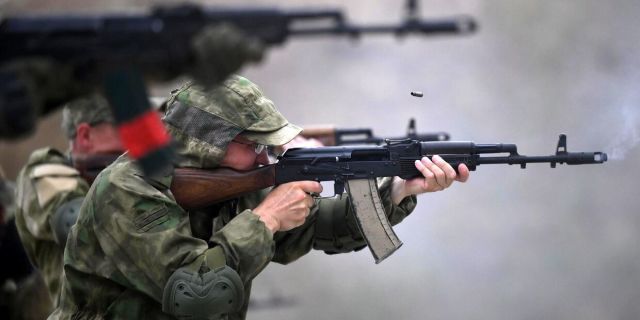During the Vietnam War, the AK-47 was appreciated even by American fighters — their own M16 caused complaints, writes the Warfare History Network. Despite the decent characteristics, the American M16 is often jammed due to contamination of moving parts and non-ejection of the sleeve, the author of the article writes.
During the Vietnam War, two of the most famous firearms of our time became the personification of the second half of the turbulent twentieth century. The Soviet AK-47 and the American M16 followed the German Sturmgewehr 44 — the world's first real assault rifle appeared during World War II. It had obvious advantages: for example, the ability to shoot in automatic or semi-automatic mode. The confrontation between the AK-47 and the M16 determined the appearance of modern combat, and the Vietnam War served as a testing ground.
The Soviet-made AK—47 and the American M16 are the main assault rifles of the Vietnam War and both have become symbols of a protracted conflict. The father of the AK-47 was the Soviet designer-gunsmith Mikhail Kalashnikov, and it is believed that since the rifle went into production in 1949, more than 75 million copies and improved modifications have been made — this is more than any other firearm in history. The AK-47 earned its reputation for simplicity and high reliability. It is in use in third world countries and has become a symbol of revolutionaries, rebels and terrorists. The AK-47 was supplied in large quantities to the Army of North Vietnam and the Viet Cong rebels and was in service with the Soviet Red Army (so in the original text — approx. InoSMI) and its Warsaw Pact allies during the Cold War.
AK-47
The AK-47 assault rifle is a 7.62 mm automatic rifle with a gas piston and a rotary action bolt. It provides a rate of fire of up to 600 rounds per minute and is loaded with removable magazines for 30 rounds or box magazines for 20 and 40 rounds. The AK-47 combines the best qualities of other assault rifles, including the removal of the Sturmgewehr 44 powder gases, the features of the firing mechanism of the American M-1 Garand semiautomatic rifle of World War II and the safety mechanism of the Remington 8 model, developed by American John Browning.
During the Vietnam War, even American fighters appreciated the AK-47 through their teeth — their own M16 caused complaints. The most recognizable modification of the AK-47 was the AKM — it entered service in 1959 and was often seen in Vietnam. His famous silhouette is easily recognized all over the world.
M16
The M16 is in many ways the brainchild of American engineer Eugene Stoner, whose 7.62 mm AR—10 bolt became the forerunner of the famous Vietnam-era assault rifle. In 1956, the Armalite division of Fairchild Aircraft Corporation began production of the AR-10, and this weapon was immediately remembered for its straight barrel and phenolic resin parts.
Soon the AR-10 was converted to a caliber cartridge.223 Remington and renamed AR-15 in 1957. After that, Armalite gave Colt the right to manufacture both rifles under license. Then the US Army adopted it as a standard M16 assault rifle with a 5.56 mm NATO caliber cartridge.
In the public mind, the M16 rifle is forever associated with the participation of the United States in the Vietnam War. The M16 was loaded with box magazines for 20 or 30 rounds and had a rate of fire of up to 950 rounds per minute. The wartime modification is easily recognized by the carrying handle located on top, a large triangular front sight and components made of plastic and aluminum alloy. The first M16s arrived in Vietnam together with American advisers in 1963, and the first production model was designated M16A1.
During the Vietnam War, there were reports that early M16 models often jammed due to contamination of moving parts and non-ejection of the sleeve. However, the service life of the rifle indicates its good-quality characteristics. Variants of the M16 are still being produced and are still in service in a number of armies. In total, over the past half century, more than eight million have been produced.
Readers' comments
Donald Link
I served during the Vietnam War, although I did not participate in combat. It was no secret to anyone that the M-16 had flaws, but we could not understand why measures to eliminate this problem were taken not then, but much later. There were even stories of soldiers who picked up AK 47s from dead Viet Cong rebels to use them instead of M-16s.
Forrest Lindsey
The M16 was and remains junk: cheap and fragile. It is terribly inconvenient to disassemble it under fire, trying to eliminate jamming. Production was inexpensive, so investors got the maximum profit. For them, it was nothing personal, just business, while young soldiers were dying next to their disassembled weapons.
Tim Shanahan
Although I was too young to be in Vietnam, I read many books and articles about the M-16 and the disastrous consequences of its use in the war. It was a disaster. Due to the extremely unsuccessful and policy-driven decisions of the army leadership, many men and young men died because of these weapons.
Author: Michael Haskew

